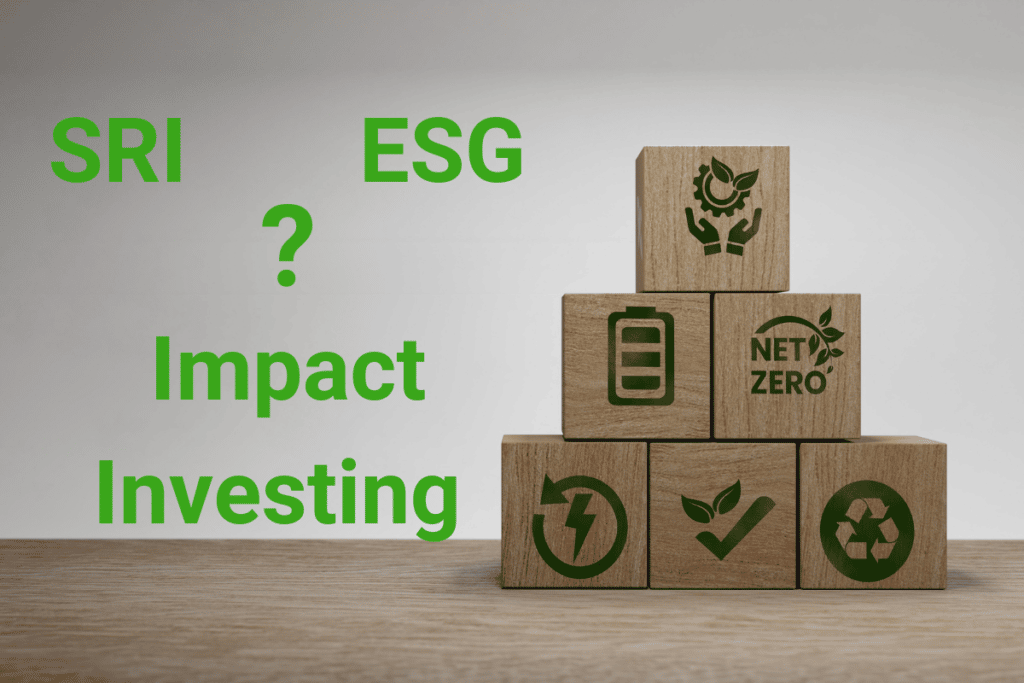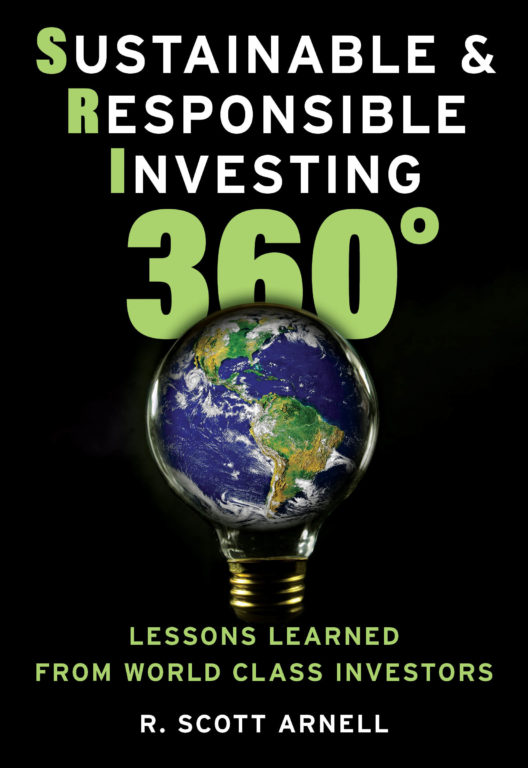
When investing into sustainable and responsible investment strategies, investors apply a variety of different strategies and objectives. Each incorporates its own non-financial value-alignment criteria into the process. To help differentiate between them, different terminologies have evolved over time, and inconsistent use has led to some confusion in the marketplace.
That’s because while these are not mutually exclusive approaches, each does have its own special characteristics. Three main umbrella terms have emerged over time: SRI (Socially Responsible Investing), ESG (Environmental, Social and Governance) and Impact Investing. Understanding these terms is helpful for any investor wanting to invest purposefully in order to determine the best way that they can integrate non-financial priorities into their financial investments.
SRI: Old School
SRI is one of the oldest acronyms used in the industry originating from the term Socially Responsible Investing. Increasingly today, it is used rather loosely to describe all types of responsible investing strategies used for positive outcome (e.g., Eurosif uses this to speak generally about Responsible & Sustainable Investing, as we do on this website and in my recent book, Sustainable & Responsible Investing 360º: Lessons Learned From World Class Investors.)
But it has historically meant an investment approach that intentionally avoids or screens out particular companies and products with a negative social impact – for example tobacco stocks.
ESG: The New Paradigm
The term ESG (Environmental, Social, Governance) dates back to the early 2000s. It was the time of the Kyoto Protocol, the Enron accounting scandal and the Exxon Valdez oil spill. Suddenly, the term socially responsible investing did not seem specific enough and the ESG investment strategy was born.
Generally speaking, ESG (Environmental, Social, Governance) investing focuses on the way companies operate, how their operations impact the environment, their employees and society. For instance, does the way the company conducts its operations help reduce the impact on climate change? Does it actively support social issues like gender equality and human rights? In terms of governance, does it exercise transparency and combat corporate corruption?
In the 2004/2005-time frame, the law firm Freshfields was tasked to assess if ESG factors should be considered as a fiduciary responsibility of institutional investors. The report found that “integrating ESG considerations into an investment analysis so as to more reliably predict financial performance is clearly permissible and is arguably required in all jurisdictions”.
ESG investments integrate a variety of environmental, social, and governance criteria into the investment decision-making process – for example by exclusions or best in class approaches, alongside financial criteria.
Impact Investing: Focusing on Positive Impact
Impact Investing is concerned with the positive impact that the invested capital has on solving important world problems while targeting a specific rate of return. One example is to invest into companies that offer affordable micro loans in communities challenged by poverty, in order to finance small businesses that commercial banks will not lend to and strengthen the economy. Another is the Lok Capital fund, which invests in companies providing affordable access to eye care in India, where 80 percent of blindness is caused by a lack of such access.
Impact Investing aims to consider all positive and negative impacts of an investment, for example along the lines of the United Nations the Sustainable Development Goals.
Which Is Best?
Which category of positive investment is best for you depends on your own financial objectives, and which gives you the optimum alignment with your organization’s values. To learn more about these acronyms and the similarities and differences between these responsible investment categories, read our in-depth article “SRI vs. ESG vs. Impact Investing: What’s the difference?” here.







